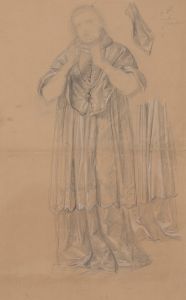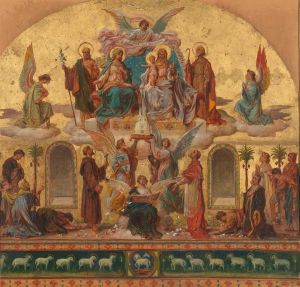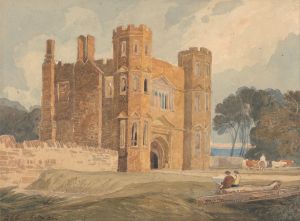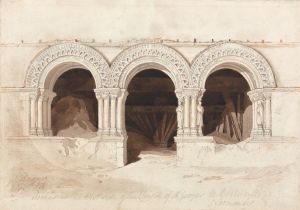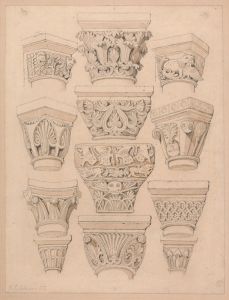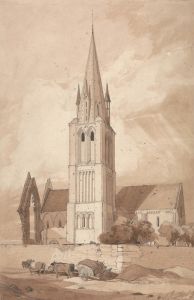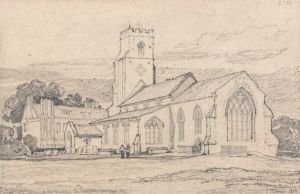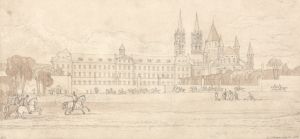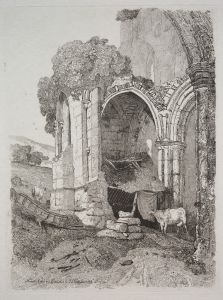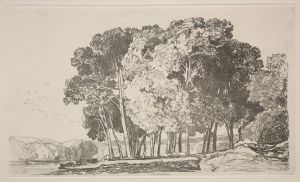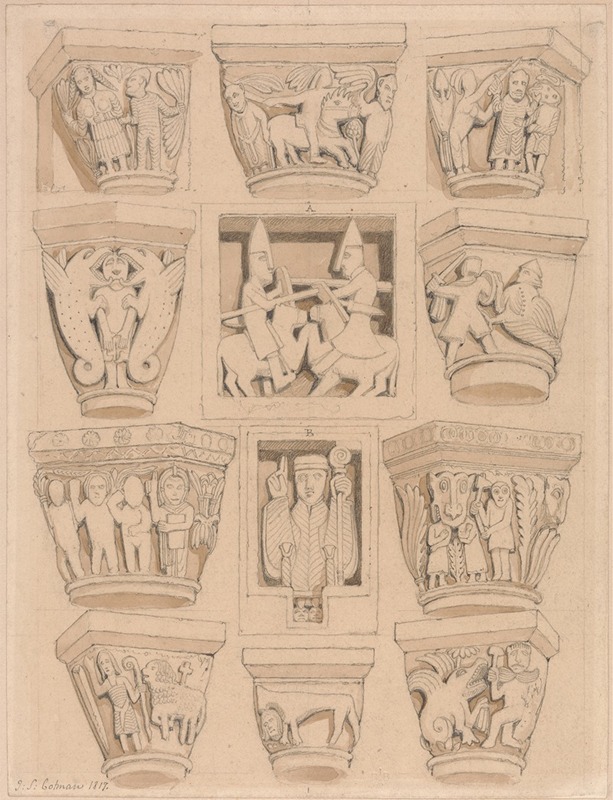
Capitals and A & B Bas-Reliefs in the Abbey Church of Saint Georges de Bocherville, near Rouen, Normandy
A hand-painted replica of John Sell Cotman’s masterpiece Capitals and A & B Bas-Reliefs in the Abbey Church of Saint Georges de Bocherville, near Rouen, Normandy, meticulously crafted by professional artists to capture the true essence of the original. Each piece is created with museum-quality canvas and rare mineral pigments, carefully painted by experienced artists with delicate brushstrokes and rich, layered colors to perfectly recreate the texture of the original artwork. Unlike machine-printed reproductions, this hand-painted version brings the painting to life, infused with the artist’s emotions and skill in every stroke. Whether for personal collection or home decoration, it instantly elevates the artistic atmosphere of any space.
John Sell Cotman, an influential figure in the English Romantic movement, is renowned for his contributions to landscape painting and printmaking. Among his notable works is "Capitals and A & B Bas-Reliefs in the Abbey Church of Saint Georges de Bocherville, near Rouen, Normandy." This artwork is a testament to Cotman's fascination with architectural forms and his skill in capturing the intricate details of historical structures.
The Abbey Church of Saint Georges de Bocherville, located near Rouen in Normandy, France, is a significant Romanesque monument dating back to the 11th century. It is known for its architectural grandeur and historical importance. Cotman visited Normandy several times during the early 19th century, drawn by the region's rich medieval heritage and picturesque landscapes. His travels in Normandy were part of a broader interest among British artists and antiquarians in the medieval architecture of France, which was seen as a source of artistic inspiration and historical insight.
Cotman's work on the Abbey Church of Saint Georges de Bocherville focuses on the capitals and bas-reliefs, which are key elements of Romanesque architecture. Capitals, the tops of columns, often feature intricate carvings and serve both a structural and decorative purpose. Bas-reliefs are sculptural techniques where the figures are slightly raised from a flat background, allowing for detailed and expressive representations. In this artwork, Cotman meticulously captures these elements, showcasing his keen eye for detail and his ability to convey the texture and form of stone through his medium.
The artwork is executed with precision and clarity, characteristic of Cotman's style. He employs a delicate balance of line and shading to highlight the architectural features, emphasizing the craftsmanship of the medieval artisans who created them. Cotman's attention to detail not only reflects his artistic skill but also his dedication to documenting historical architecture with accuracy and respect.
Cotman's interest in architectural subjects was part of a broader trend in the 19th century, where artists and scholars sought to preserve and study the remnants of medieval Europe. His work contributed to the growing appreciation of Gothic and Romanesque architecture, influencing both contemporary and later artists and architects. Through his art, Cotman played a role in the revival of interest in medieval architecture, which had a lasting impact on the fields of art and architecture.
"Capitals and A & B Bas-Reliefs in the Abbey Church of Saint Georges de Bocherville, near Rouen, Normandy" is a significant example of Cotman's architectural studies. It reflects his mastery of form and his commitment to capturing the essence of historical structures. This artwork, like many of Cotman's pieces, serves as a valuable historical document, offering insights into the architectural heritage of Normandy and the artistic endeavors of the Romantic period.
In summary, John Sell Cotman's depiction of the Abbey Church of Saint Georges de Bocherville is a remarkable example of his architectural studies, illustrating his skill in rendering the intricate details of Romanesque architecture. His work not only highlights the beauty of medieval craftsmanship but also contributes to the preservation and appreciation of historical architecture.





